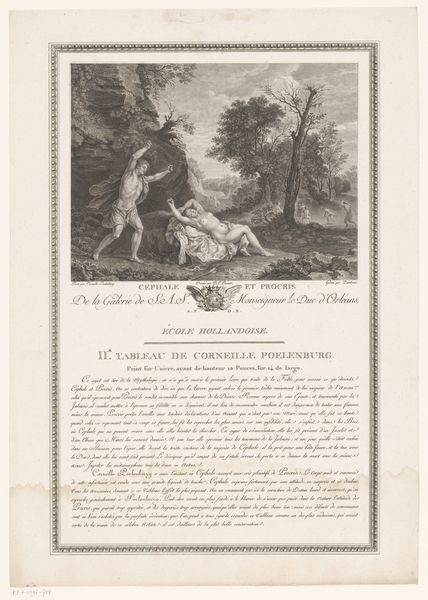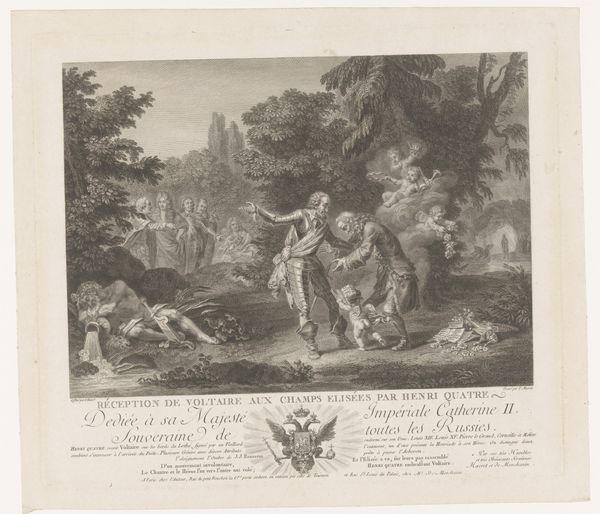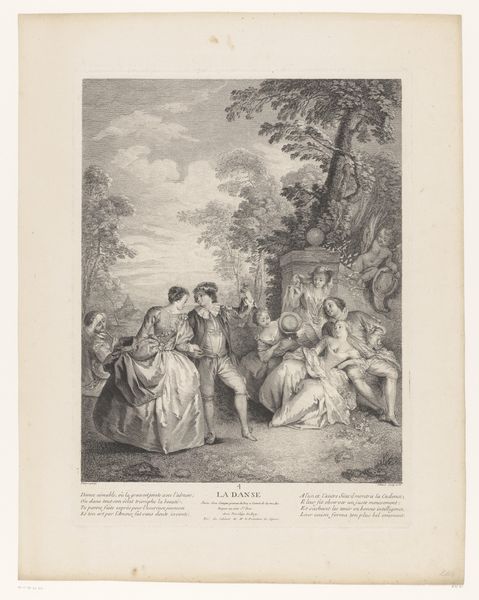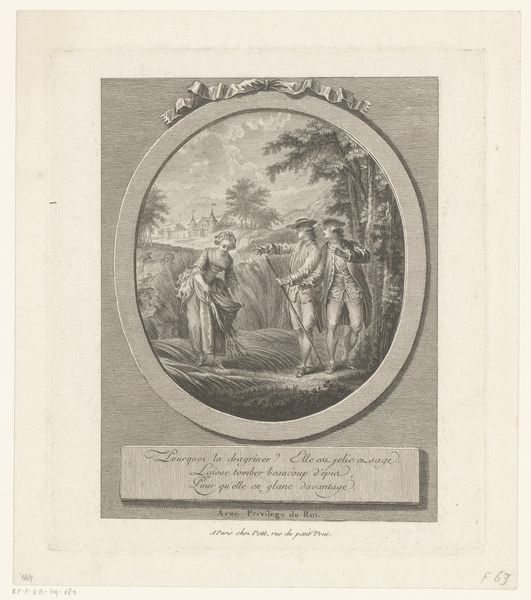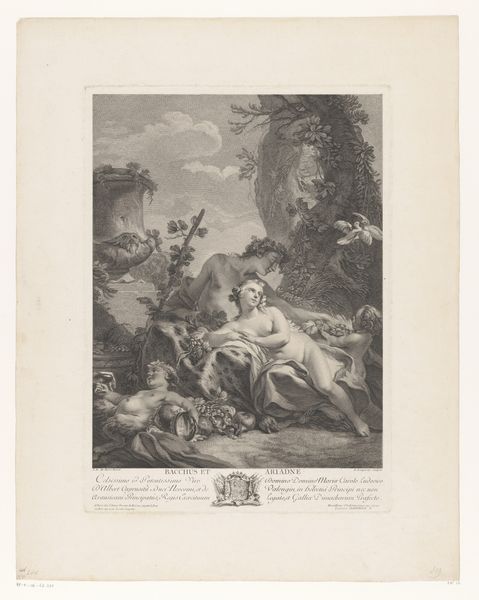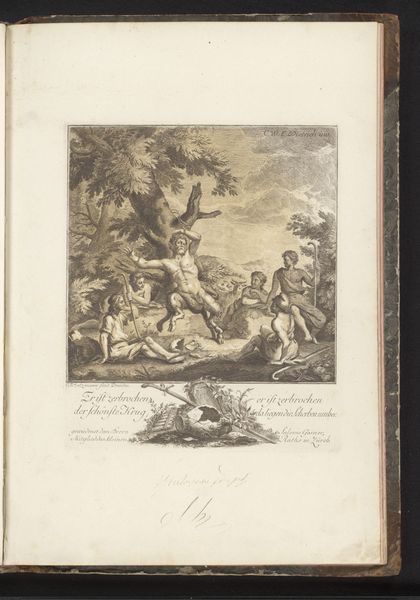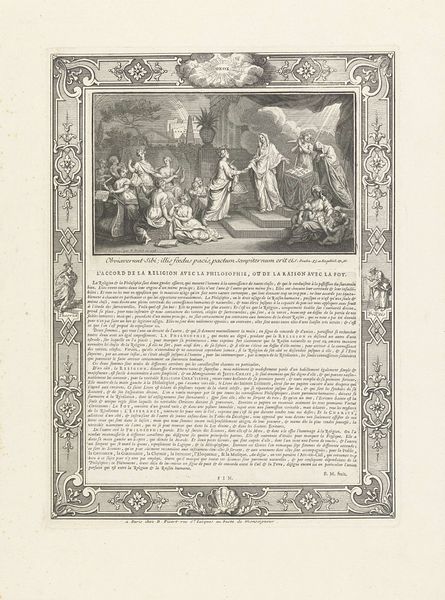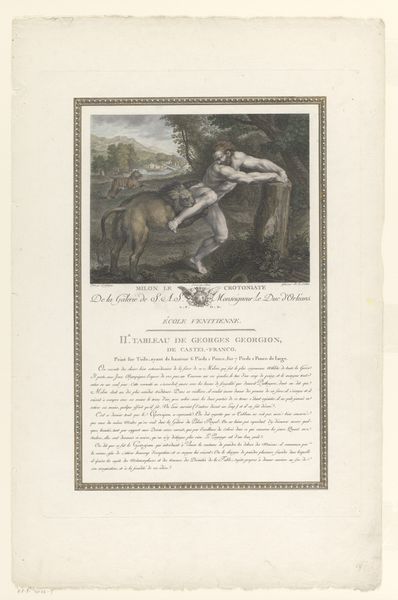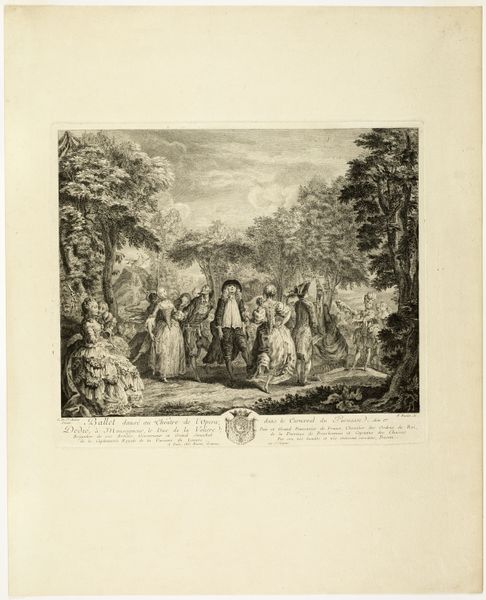
print, etching, engraving
#
portrait
#
allegory
# print
#
etching
#
history-painting
#
italian-renaissance
#
engraving
Dimensions: height 421 mm, width 296 mm
Copyright: Rijks Museum: Open Domain
Curator: Let's discuss this engraving titled "Opvoeding van Zeus," or "The Education of Zeus," made between 1786 and 1808 after Jules Romain. The print renders a scene with nymphs tending to the infant Zeus in a wooded landscape. What are your first impressions? Editor: The first thing that strikes me is the detailed use of line. There's a clear hierarchy of values, but overall, the effect feels incredibly precise and controlled. Look at the meticulous rendering of the drapery. It gives the forms substance and weight, making the divine almost palpable, a contrast with the classical scene. Curator: Absolutely. And that tension speaks volumes about its context. The engraving served as a reproductive print—meant to disseminate visual knowledge of paintings by earlier masters. The engraver, Charles Emmanuel Patas, skillfully uses line to translate the texture and composition of what would've originally been a massive painted canvas. Editor: That makes a lot of sense. Knowing it's a reproduction highlights the role of the engraver as both artisan and interpreter. It points to questions around artistic labour and value. Curator: Precisely. Also consider the gendered dynamics: The subject matter presents a scene of female nurturance surrounding the soon-to-be ruler Zeus. The care given to him within this all-female setting challenges our notions of patriarchal origin myths and hints at female power and agency in his ascendance. Editor: Interesting how the original painter, engraver, commissioner, and presumably intended audience were men, interpreting a feminized context! But how fascinating that it depicts the early formation of power through the traditionally feminized act of nurture. And what did prints such as these mean for disseminating new ideas on labour during industrial revolution? Curator: I think you’re on the right track with labor practices. Editor: It really pulls you in. I am wondering where were prints such as this hung, in order to examine power and labour like we’re doing. Curator: Looking at "The Education of Zeus," understanding both its subject matter within its socio-historical framework gives such deeper perspective. Editor: Yes. It makes you think about all the layers that contributed to not only the artistic skills put to display, but the circulation of this idea over time and labor!
Comments
No comments
Be the first to comment and join the conversation on the ultimate creative platform.
